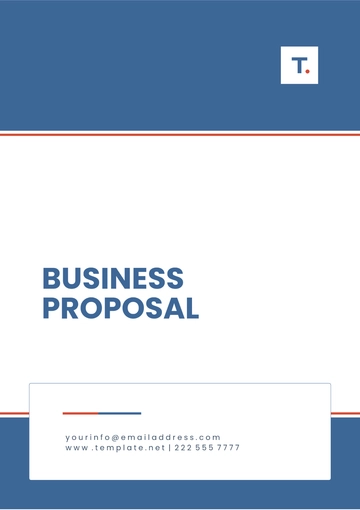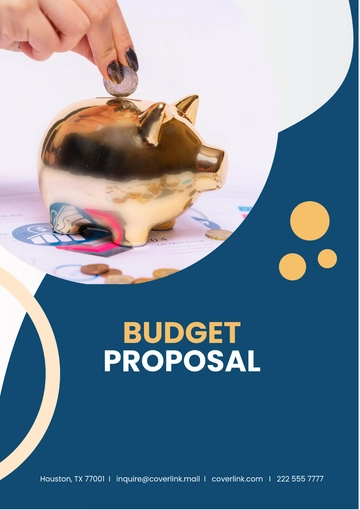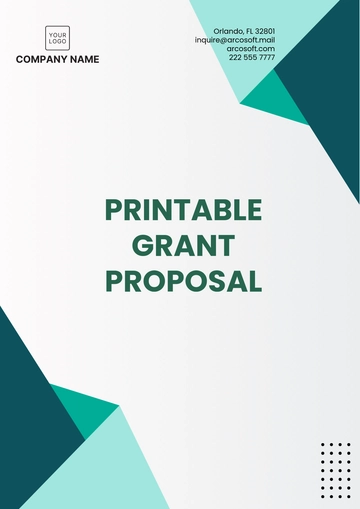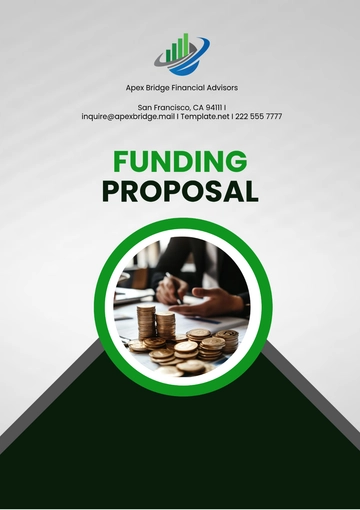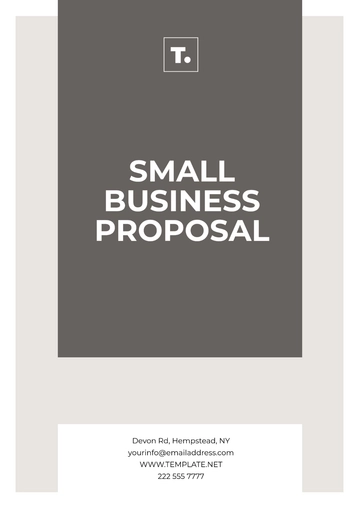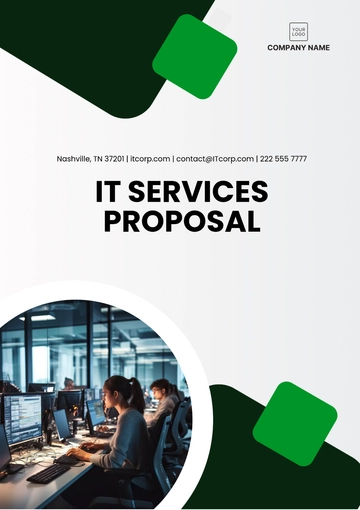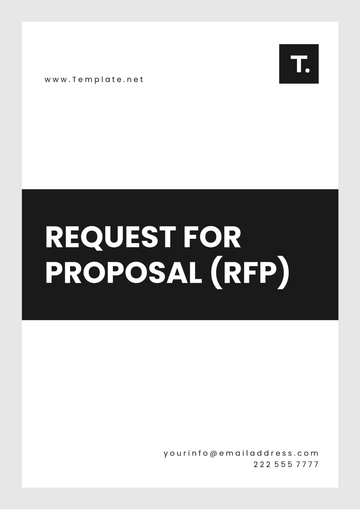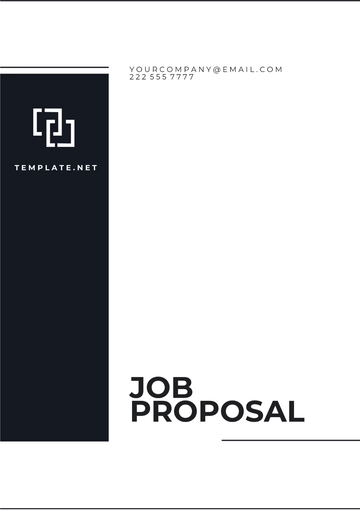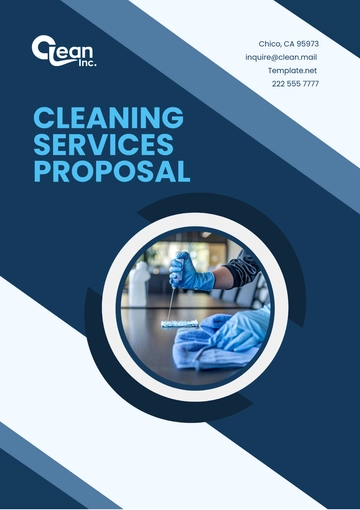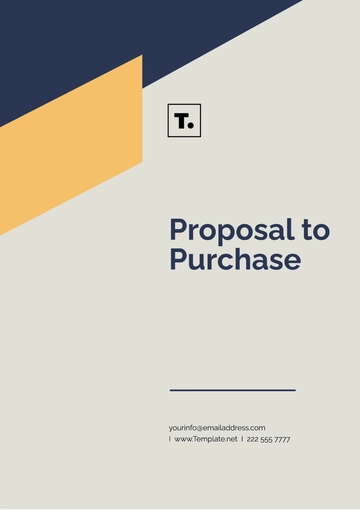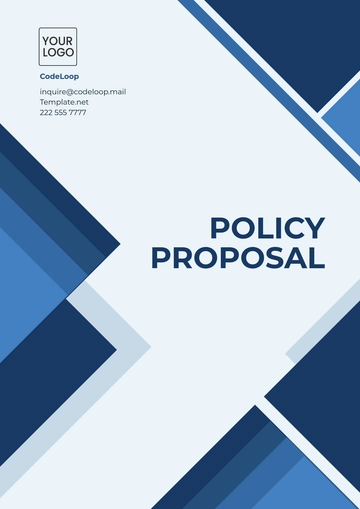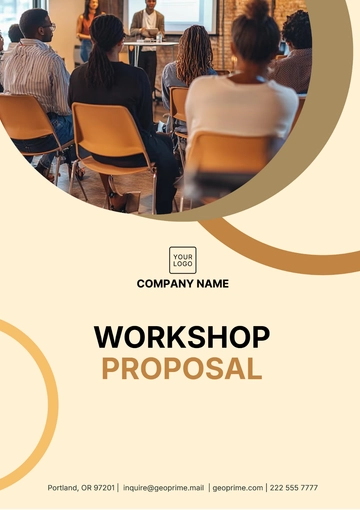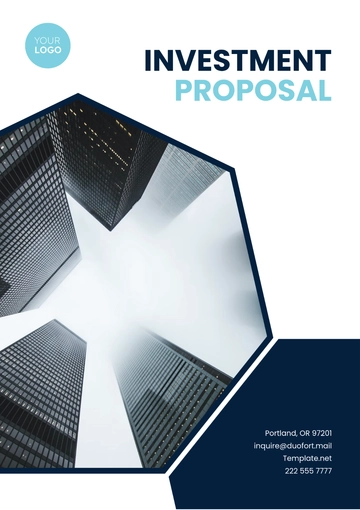Free Administration Meeting Improvement Proposal
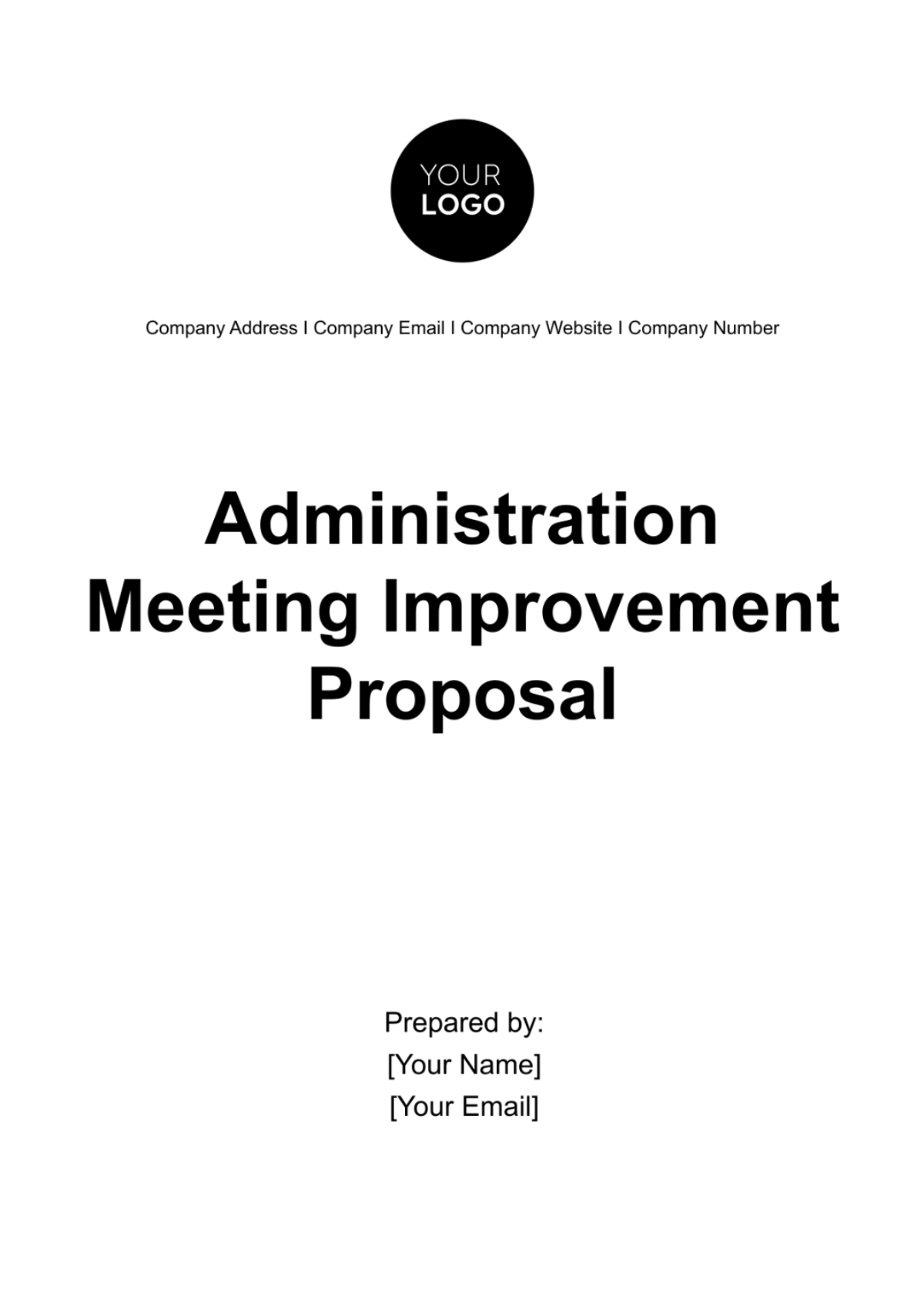
I. Executive Summary
This proposal is designed to enhance the effectiveness and efficiency of our administration meetings at [Your Company Name]. The proposal outlines a series of strategies aimed at improving the structure, format, and productivity of these meetings. The ultimate goal is to ensure that our meetings are not just routine gatherings, but productive sessions that contribute significantly to our organization’s success.
The strategies proposed in this document are based on best practices and innovative solutions that have proven effective in various organizational settings. They include standardizing meeting processes, fostering a culture of collaboration and open communication, and leveraging technology to streamline meeting procedures. Each of these strategies is designed to address specific challenges that are often associated with administration meetings, such as lack of focus, time inefficiency, and low participant engagement.
By implementing these strategies, we aim to transform our administration meetings into powerful tools for decision-making, problem-solving, and team-building. We believe that effective meetings can significantly enhance our team’s productivity, foster a positive work environment, and ultimately drive our organization towards its strategic objectives.
II. Objective
The following objectives have been established to guide the enhancement of our administration meetings:
A. Elevate Meeting Efficiency
Efficiency in meetings is not just about reducing the duration but also about maximizing the output of the time spent. By elevating meeting efficiency, we aim to make our meetings more productive and less time-consuming, thereby freeing up valuable time for other important tasks.
B. Ensure Adherence to Established Agendas
Adherence to established agendas is crucial for maintaining the focus and direction of meetings. By ensuring adherence to established agendas, we aim to keep our meetings focused on the issues at hand, thereby ensuring that all necessary topics are covered and decisions are made.
C. Foster a Culture of Collaboration and Open Communication
In a collaborative environment, everyone feels heard and valued, leading to better ideas and solutions. By fostering a culture of collaboration and open communication, we aim to enhance the quality of our decisions and foster a more inclusive and engaging meeting environment.
D. Maximize Meeting Productivity Through Technology
Technology can play a key role in enhancing meeting productivity. By maximizing meeting productivity through technology, we aim to leverage the power of digital tools to make our meetings more efficient, engaging, and productive.
III. Scope
The scope of this proposal extends to all aspects of administration meetings at [Your Company Name]. This includes the format, procedures, and technologies used in these meetings:
A. Utilizing Time Effectively
Effective time utilization is a key aspect of efficient meetings. This involves not just managing the duration of meetings but also ensuring that the time spent in meetings is productive. This includes having clear objectives for each meeting, keeping discussions focused, and ensuring that decisions are made promptly.
B. Promoting Active Participation
Active participation is crucial for effective decision-making. When all members participate actively, it leads to a wider range of ideas and perspectives, leading to better decisions. Promoting active participation involves creating an environment where everyone feels comfortable sharing their ideas and opinions, and where all contributions are valued and considered.
C. Implementing Technology Where Appropriate
Technology can significantly enhance the efficiency and effectiveness of meetings. From digital tools for scheduling and note-taking to collaboration tools for discussion and decision-making, technology can play a key role in enhancing meeting productivity. Implementing technology where appropriate involves identifying the right tools for our needs and integrating them effectively into our meeting processes.
IV. Proposed Strategies
The following strategies are proposed to achieve the objectives outlined in this proposal:
A. Standardizing Meeting Processes
Establish a clear agenda: The meeting organizer should create a detailed agenda that outlines the topics to be discussed, the order of discussion, and the time allocated for each topic. This agenda should be distributed to all participants in advance of the meeting to allow them to prepare.
Set time limits for each agenda item: The meeting organizer should set strict time limits for each agenda item to ensure that all topics are covered within the meeting’s duration. If a topic requires more time, it should be tabled for a future meeting or discussed separately.
Implement a system for tracking action items: The meeting organizer should use a digital tool or software to record all action items that arise during the meeting. This tool should allow for the assignment of tasks to specific individuals and the tracking of task progress.
Encourage active participation: The meeting organizer should foster an environment where all participants feel comfortable sharing their ideas and opinions. This could involve using round-robin discussions, brainstorming sessions, or other participatory techniques.
B. Implementing Technology
Use digital tools for scheduling and reminders: The meeting organizer should use a digital calendar or scheduling tool to schedule meetings and send reminders to participants. This tool should allow for the easy rescheduling of meetings if necessary and the inclusion of meeting agendas and other relevant documents.
Implement video conferencing for remote participants: The meeting organizer should use a reliable and easy-to-use video conferencing platform for remote participants. This platform should allow for screen sharing, real-time collaboration on documents, and other features that facilitate remote participation.
Explore AI-driven tools for meeting transcription and action item tracking: The meeting organizer should explore the use of AI-driven tools that can automatically transcribe meetings and track action items. These tools can save time, reduce the risk of human error, and ensure that all important information is captured.
C. Enhancing Collaboration
Promote a culture of respect and inclusivity: The meeting organizer should set the tone for the meeting by promoting respect and inclusivity. This could involve setting ground rules for respectful communication, actively soliciting input from all participants, and ensuring that all ideas and opinions are valued.
Encourage diverse viewpoints: The meeting organizer should encourage all participants to share their unique perspectives and ideas. This could involve asking open-ended questions, using brainstorming sessions to generate ideas, and creating a safe space for constructive disagreement.
Implement strategies for resolving conflicts: The meeting organizer should have strategies in place for resolving conflicts that arise during meetings. This could involve using a structured process for conflict resolution, providing training on conflict management for participants, or bringing in a neutral third party to mediate conflicts.
V. Benefits and Impact
A. Benefits
Improved Efficiency: The proposed changes aim to make our meetings more efficient. This includes:
1.1. Reduced meeting duration: By keeping meetings focused and on track, we can reduce the time spent in meetings. This not only frees up time for other tasks but also ensures that participants’ attention and energy are not unnecessarily drained.
1.2. Increased productivity: With more efficient meetings, participants can spend more time on other important tasks. This can lead to increased productivity across the board, as time saved from meetings can be redirected towards other productive activities.
1.3. Better decision-making: Efficient meetings lead to more focused discussions and, consequently, better decisions. When meetings are efficient, decisions are made more quickly, and the quality of those decisions is often higher.
Enhanced Communication: The proposal also aims to enhance communication in meetings. This includes:
2.1. Clearer communication: With a well-structured agenda and meeting format, communication during meetings will be clearer and more effective. This can prevent misunderstandings and ensure that everyone is on the same page.
2.2. Better understanding: Enhanced communication leads to a better understanding of the issues discussed, leading to better decisions. When communication is clear, participants can better understand each other’s perspectives and make more informed decisions.
2.3. Improved relationships: Effective communication can also improve relationships among team members, leading to a more harmonious work environment. When team members communicate effectively, it fosters mutual respect and understanding, which can improve team dynamics.
Increased Engagement: The proposed changes aim to increase engagement in meetings. This includes:
3.1. Active participation: By fostering a culture of collaboration and open communication, we can encourage all participants to actively contribute to meetings. This not only leads to a wider range of ideas and perspectives but also makes participants feel valued and heard.
3.2. Greater involvement: Increased engagement leads to greater involvement in decision-making, which can lead to better decisions. When participants are engaged, they are more likely to take ownership of decisions, which can improve the implementation of those decisions.
3.3. Enhanced motivation: When participants feel that their contributions are valued, they are likely to be more motivated, which can lead to increased productivity.
Integration of Technology: The proposal includes the integration of technology in meetings. This includes:
4.1. Streamlined processes: Digital tools can help streamline meeting processes, making them more efficient. This can save time, reduce the risk of errors, and improve the overall flow of meetings.
4.2. Remote participation: With video conferencing, remote participants can also contribute to meetings, leading to more inclusive discussions. This can ensure that everyone’s voice is heard, regardless of their location.
4.3. Automated documentation: AI-driven tools can help with meeting transcription and action item tracking, reducing the administrative burden of meetings. This can ensure that nothing is missed and that all action items are properly tracked and followed up on.
VI. Implementation
The implementation of the proposed strategies is a critical phase in the improvement of our administration meetings. The following table provides an overview of the key activities involved in the implementation phase, along with their respective start and end dates:
Activity | Start Date | End Date |
|---|---|---|
Establish a clear meeting agenda | March 1, 2056 | March 5, 2056 |
Establishing a clear meeting agenda is set to commence on March 1, 2056, and conclude on March 5, 2056. This activity is crucial as it sets the foundation for all subsequent activities. A clear and well-structured agenda is the backbone of an effective meeting. It guides the flow of discussion, ensures that all necessary topics are covered, and helps keep the meeting within the allocated time. By establishing a clear meeting agenda, we can ensure that our meetings are focused, productive, and efficient. This leads to more informed discussions and better decision-making. Furthermore, a clear agenda also demonstrates respect for the participants’ time, as it prevents unnecessary diversions and ensures that the meeting stays on track.
Overall, implementing these strategies can significantly enhance the effectiveness and efficiency of our meetings. By focusing on clear communication, active participation, and the strategic use of technology, we can create a meeting environment that not only facilitates decision-making but also fosters collaboration and innovation. In the long run, these improvements in our meetings can have a profound impact on our organization as a whole. They can lead to improved team dynamics, more innovative solutions, and ultimately, a more successful and effective organization.
VII. Budget
The budget is a crucial component of this proposal. The following chart and table provides a detailed breakdown of the estimated costs:
Expense Category | Estimated Cost |
|---|---|
Technology and Software | $2,000 |
Training and Development | $1,000 |
Overhead and Miscellaneous | $500 |
Total | $3,500 |
An estimated amount of $2,000 is allocated for Technology and Software. This allocation is crucial as the integration of technology is a significant part of our proposal. The funds will be used to purchase and maintain the necessary digital tools and software that will be used to streamline our meeting processes, facilitate remote participation, and automate meeting transcription and action item tracking.
Investing in technology and software is a strategic move that can greatly enhance the efficiency and effectiveness of our meetings. By leveraging digital tools, we can automate many of the administrative tasks associated with meetings, freeing up time for participants to focus on the discussion at hand. Furthermore, these tools can also enhance the inclusivity of our meetings by enabling remote participation, ensuring that all voices are heard regardless of location.
Overall, these expenses are crucial investments towards the successful implementation of the proposed strategies. These expenses cover the cost of new technology and software, training and development for our team members, and other overhead costs associated with the changes. They represent the financial commitment we are making to improve the efficiency and effectiveness of our administration meetings. By allocating funds for these expenses, we are investing in the tools and resources necessary to make our meetings more productive and inclusive.
VIII. Risks and Mitigation Strategies
A. Risks
Resistance to Change: As with any change, there may be resistance from team members who are comfortable with the current meeting structure and processes. This resistance can slow down the implementation process and reduce the effectiveness of the proposed changes.
Technological Challenges: The integration of new digital tools and software can present technological challenges. These can include issues with software compatibility, user training, and technical glitches.
Increased Time Investment Initially: The initial stages of implementing the proposed changes may require a significant time investment. This can include time spent training team members, setting up new digital tools, and adjusting to new meeting structures and processes.
Potential Over-reliance on Technology: While technology can greatly enhance the efficiency of meetings, there is a risk of becoming overly reliant on it. Technical issues or outages could disrupt meetings and cause delays.
Confidentiality Concerns: With the use of digital tools, there may be concerns about the confidentiality and security of meeting discussions and documents. It’s important to ensure that any tools used comply with our data security policies.
B. Mitigation Strategies
Effective Communication: To mitigate resistance to change, it’s crucial to communicate effectively with all team members. This includes explaining the reasons for the change, outlining the benefits they can expect, and addressing any concerns they may have.
Comprehensive Training: To address technological challenges, comprehensive training should be provided to all team members. This training should cover how to use the new digital tools, troubleshooting common issues, and who to contact for technical support.
Phased Implementation: To manage the increased time investment, the proposed changes could be implemented in phases. This allows team members to adjust to the changes gradually and can reduce the impact on their regular work schedules.
Balanced Use of Technology: To prevent over-reliance on technology, it’s important to maintain a balance. While technology can enhance efficiency, it’s also important to develop and maintain skills that do not rely on technology.
Data Security Measures: To address confidentiality concerns, it’s important to ensure that any digital tools used comply with our data security policies. This may involve conducting security audits, using encryption, and providing training on data security.
IX. Conclusion
In conclusion, this proposal represents a significant step towards improving the way we conduct our administration meetings at [Your Company Name]. By implementing the proposed strategies, we can make our meetings more efficient, productive, and inclusive. This will not only enhance the quality of our meetings but also contribute to a more collaborative and effective work environment.
Furthermore, the enhancement of our administration meetings is an invaluable investment that will spur productivity and improve overall decision-making processes. It is crucial to stay committed to this endeavor and act swiftly for optimum results. By implementing these changes, we can ensure that our administration meetings are not only efficient and productive but also foster a culture of collaboration and open communication. This will ultimately contribute to the overall success of [Your Company Name].
- 100% Customizable, free editor
- Access 1 Million+ Templates, photo’s & graphics
- Download or share as a template
- Click and replace photos, graphics, text, backgrounds
- Resize, crop, AI write & more
- Access advanced editor
Improve your meetings effortlessly with the Administration Meeting Improvement Proposal Template! This customizable and editable tool from Template.net can be easily modified with our AI Editor Tool. This versatile solution provides a structured format for proposing meeting improvements, helping you enhance the effectiveness of your meetings and boost team productivity!
You may also like
- Business Proposal
- Research Proposal
- Proposal Request
- Project Proposal
- Grant Proposal
- Photography Proposal
- Job Proposal
- Budget Proposal
- Marketing Proposal
- Branding Proposal
- Advertising Proposal
- Sales Proposal
- Startup Proposal
- Event Proposal
- Creative Proposal
- Restaurant Proposal
- Blank Proposal
- One Page Proposal
- Proposal Report
- IT Proposal
- Non Profit Proposal
- Training Proposal
- Construction Proposal
- School Proposal
- Cleaning Proposal
- Contract Proposal
- HR Proposal
- Travel Agency Proposal
- Small Business Proposal
- Investment Proposal
- Bid Proposal
- Retail Business Proposal
- Sponsorship Proposal
- Academic Proposal
- Partnership Proposal
- Work Proposal
- Agency Proposal
- University Proposal
- Accounting Proposal
- Real Estate Proposal
- Hotel Proposal
- Product Proposal
- Advertising Agency Proposal
- Development Proposal
- Loan Proposal
- Website Proposal
- Nursing Home Proposal
- Financial Proposal
- Salon Proposal
- Freelancer Proposal
- Funding Proposal
- Work from Home Proposal
- Company Proposal
- Consulting Proposal
- Educational Proposal
- Construction Bid Proposal
- Interior Design Proposal
- New Product Proposal
- Sports Proposal
- Corporate Proposal
- Food Proposal
- Property Proposal
- Maintenance Proposal
- Purchase Proposal
- Rental Proposal
- Recruitment Proposal
- Social Media Proposal
- Travel Proposal
- Trip Proposal
- Software Proposal
- Conference Proposal
- Graphic Design Proposal
- Law Firm Proposal
- Medical Proposal
- Music Proposal
- Pricing Proposal
- SEO Proposal
- Strategy Proposal
- Technical Proposal
- Coaching Proposal
- Ecommerce Proposal
- Fundraising Proposal
- Landscaping Proposal
- Charity Proposal
- Contractor Proposal
- Exhibition Proposal
- Art Proposal
- Mobile Proposal
- Equipment Proposal
- Student Proposal
- Engineering Proposal
- Business Proposal

